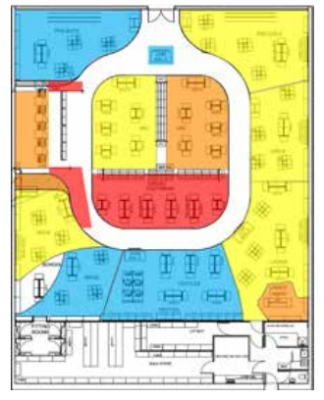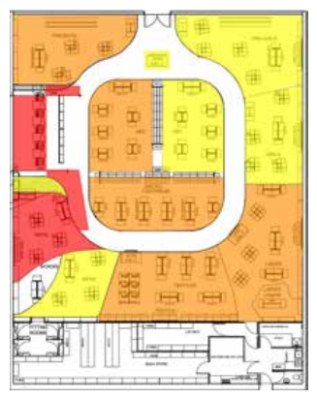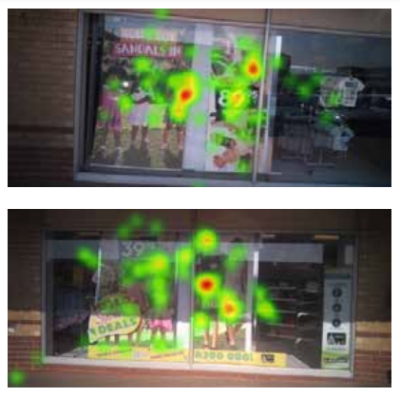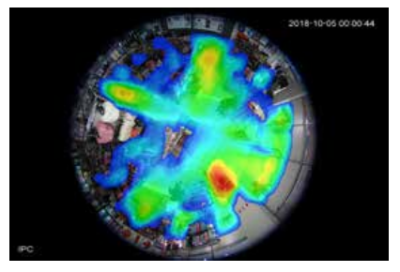Optimizing the Shopper Path to Purchase
In-Store POS Efficiency and Effectiveness
Physical brick and mortar retail outlets, specifically those within the value fashion industry, operate in a highly competitive environment. Increasingly, the real-world in-store shopping experience is becoming a key differentiator for fashion retailers, as it enables them to provide unique shopping experiences for their customers that are effortless, enjoyable and emotionally engaging. This is especially true given the rapid growth of online retail offerings, which are currently unable to provide a truly immersive realworld shopping experience (however, this is likely to change given the rise of Virtual Reality and Augmented Reality solutions). The product merchandising and in-store communication strategies that are deployed by brick and mortar retailers play a key role in the overall shopping experience. However, these elements are costly to develop, produce and distribute, and the true efficiency and effectiveness of these elements is often unknown.
Ackermans, one of South Africa’s largest value fashion retailers, with over 450 stores across five countries, commissioned Neural Sense to conduct exploratory research into the in-store consumer experience of their stores. The management team wanted to understand how their stores are visually navigated and assess the performance of the existing:
- In-store shopper zones
- Product mechanizing activities
- POS materials (both in terms of location & vehicle type)
Approach
The Neural Sense team’s approach needed to address two main areas:
Shopping behavior: How do customers navigate and shop the store? How influential are the POS materials? What role does pricing/size information play during store navigation and product selection?
Time and attention: How much “visual time” is spent exploring each store area and gazing/fixating on specific POS elements. Therefore how much attention is actually being paid to each element?
Using mobile eye-tracking glasses (to measure attention) and galvanic skin response ([GSR] to measure levels of emotional arousal through electrodermal activity), we investigated how customers visually navigated the instore environment and gained in-depth insight into their shopping experience. We also compared behavioral observations with the customers’ self-reported responses to their in-store experience using an exit interview session. This allowed for a comparative assessment of their conscious responses to the biometric data from their subconscious real-world experience for deeper insight.


Figure 1 Figure 2
We calculated fixation values for a number of areas of interest for each POS element as well as positional markers for the various store areas under evaluation. The average amount of time spent viewing a particular POS element/store area gave an indication of the importance of that POS element/area for the consumer during their shopping experience (figure 1). Fixation counts also provided a measure of attention. The higher the number of fixation points and/or duration the better that particular region/area of interest performed in terms of being able to draw and maintain attention (figure 2).


Figure 3 Figure 4
Customers’ behavioral responses were also coded by blind raters (who were not responsible for the rest of the data analysis) and matched post marking with both the biometric and eye-tracking data. Heat maps of the customers’ visual engagement with specific areas of the store were also produced (figure 3), and foot-traffic heat maps were also used (figure 4). For store zones in which customers spent significant amounts of time, GSR data in conjunction with eye-tracking data was used to compute emotional engagement levels and estimate cognitive load metrics.
Results
Of the customers who took part in the study, 19% were directly influenced by POS material at some point in time during their shopping journey. Only 35% of all in-store POS elements were found to be effective. We were also able to identify the performance and importance of each individual piece of information that was presented on each POS element (for example: pricing information, a featured product and/or headlines/body copy).
Regarding store navigation, we identified three unique browsing behavior shopper types that were directly influenced by either product merchandising, pricing or promotional activity. The unique behavioural observations that were identified also provided insight into the sensory experience of shoppers, as well as the social aspect of their shopping experience, both of which where previously unknown influencers.
Conclusions and final thoughts
The vast majority of in-store POS materials are ineffective and inefficient. There is generally a “quantity over quality” approach to POS materials, which creates significant clutter and choice overload. Value fashion retailers need to conduct research studies of this nature to identify the shopper marketing activities that create value (not clutter) and maximize ROI. However, in-store eye-tracking studies still pose a series of challenges for the neuromarketing practitioner. There are significant difficulties when analyzing pupil dilation changes (pupillometry) given the contrasting and changing light conditions within the store as well as variable visual experiences. Eye-tracking studies can be further supported by additional consumer neuroscience technologies such as electroencephalography for even deeper insight into the consumers’ shopping experience.
CONTACT INFORMATION
Neural Sense www.neuralsense.com
Contact: Dr. David Rosenstein
David.rosenstein@neuralsense.co.za
This article was originally published in the Neuromarketing Yearbook. Order your copy today